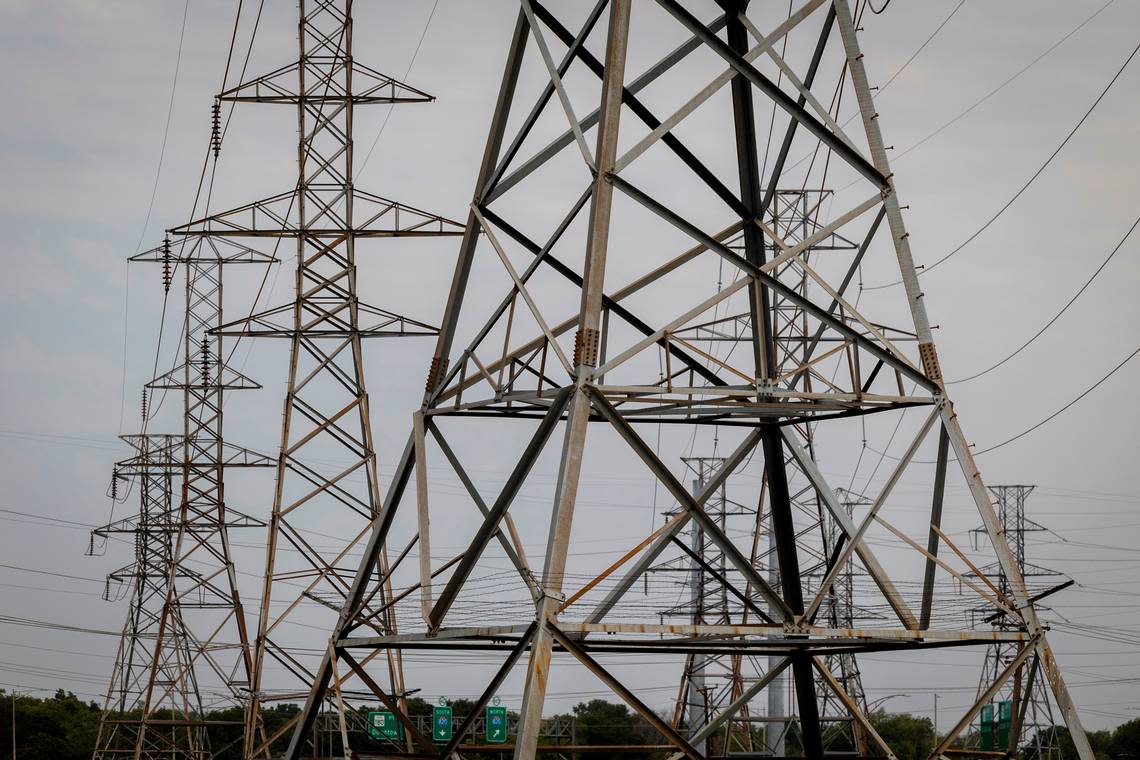ERCOT’s new program could protect Texans from blackouts, high energy bills this winter
A program designed to protect Texans from blackouts and high energy bills by tapping into home solar and battery systems as needed, especially during severe weather, could begin as early as mid-November.
The Public Utility Commission of Texas on Nov. 3 approved the aggregated distributed energy resources pilot program, after the Electric Reliability Council of Texas approved and announced its creation last month.
The pilot project will look into how distributed energy resources can boost grid reliability and lower energy costs. The program examines how resources like solar panels and battery storage can help Texans get electricity when they need it.
As the second anniversary of the deadly, days-long Texas freeze nears, the vulnerability of Texas’ power grid is top-of-mind for many in the state. In fact, a recent report from the Federal Energy Regulatory Commission indicated the Texas electric grid remains almost as vulnerable to extreme winter weather as it was back in February 2021. The document, according to a report from the Austin American-Statesman, states that ERCOT’s ability to handle similar extreme winter weather is only marginally better.
The @PUCTX approved the Distributed Energy Resource (ADER) pilot unanimously just now. This will allow thousands of small sources to add up to 80MW of power available to the grid to improve reliability and lower costs and emissions. Great work by PUC on this. #txlege #txenergy
— Doug Lewin (@douglewinenergy) November 3, 2022
The test program, experts say, could help ensure electric reliability and prevent widespread power outages. When connected to the electric utility’s low voltage distribution system, the individual home systems can help deliver clean power to additional customers and reduce outages along transmission and distribution lines.
“The goal of the program is to test out and demonstrate that electricity from distributed resources like rooftop solar and batteries can help the grid,” Amy Heart, vice president of public policy at Sunrun and one of the members of PUCT’s newly-formed DER Task Force, told the Star-Telegram. “At a given time, we can export clean electrons into the grid that can help out ERCOT when they need it most.”
Heart said the project will make clean energy more affordable for homeowners — even compensating customers for their participation. How much individual households get back will be determined by retail electricity providers, in hopes of encouraging enrollment.
This is the second program of its kind in the country, the first being in New England. It’s the result of months of consultations and planning by a 20-member stakeholder committee, including aggregated distributed energy resource providers like Heart, as well as transmission and distribution providers, rural electric providers and technical expertise institutions.
Putting consumers in control
The program will “put consumers in control of their energy future,” PUCT Commissioner Will McAdams said during a Nov. 3 meeting, as Texans with home solar and battery systems are able to provide electricity to the grid.
Some 80 MW of electricity generated from solar and battery systems is how much program designers expect to see flow into the ERCOT grid, per Utility Dive, but that could soon grow.
There are nearly 3,000 MW of distributed generation resources currently on the ERCOT grid, about a quarter of which was added in 2021 alone — as more Texans installed backup power sources on their houses following Winter Storm Uri blackouts.
“We have of course certainly seen an increase in interest for homeowners, especially after Winter Storm Uri and an interest in adding batteries to a solar system for peace of mind, in case there are weather related outages,” Heart said. “But 99% of the time that battery will sit there unused, so this program leverages these resources that we haven’t used before in Texas.”
“The next steps will be getting utilities to raise their hand and say that customers in their utility area can participate,” Heart says.
A test run, then full implementation
Several of the state’s utilities, namely CenterPoint Energy, Oncor Electric and Texas-New Mexico Power Co., have already indicated they will participate. Homeowners with rooftop solar and battery systems will soon be able to enroll with their retail electricity provider.
The program is expected to run for a minimum of three years, which will allow for energy management system upgrades, testing of customer migration and qualifying resources for ERCOT services. Pilot projects allow ERCOT to evaluate costs and benefits without full implementation.
“In the short term, we expect the pilot will bring in vital megawatts of resources for participation in the ERCOT market,” PUCT commissioners Will McAdams and Jimmy Glotfelty wrote.
While the initial rollout will only be available to customers in utilities that have volunteered to be part of it, Heart hopes that the program will soon be offered to a broader range of Texas homeowners. And other states sharing Texas’ constraints with high energy prices and increased outages could replicate the model in the future.
“The pilot project will continue until implementation of ERCOT market rules and systems are in place to accommodate participation by ADERs or until ERCOT, following PUCT consultation, or the PUCT deems the pilot project unnecessary,” ERCOT says.


